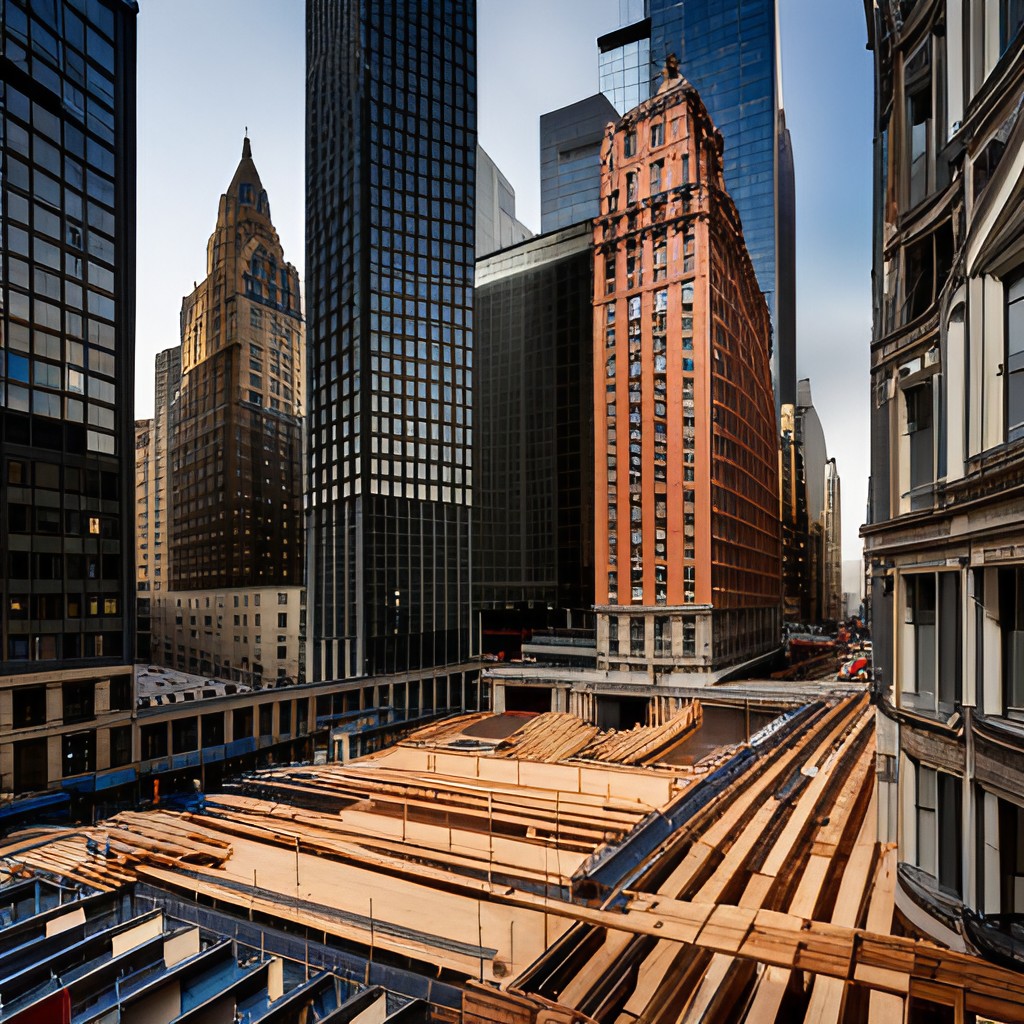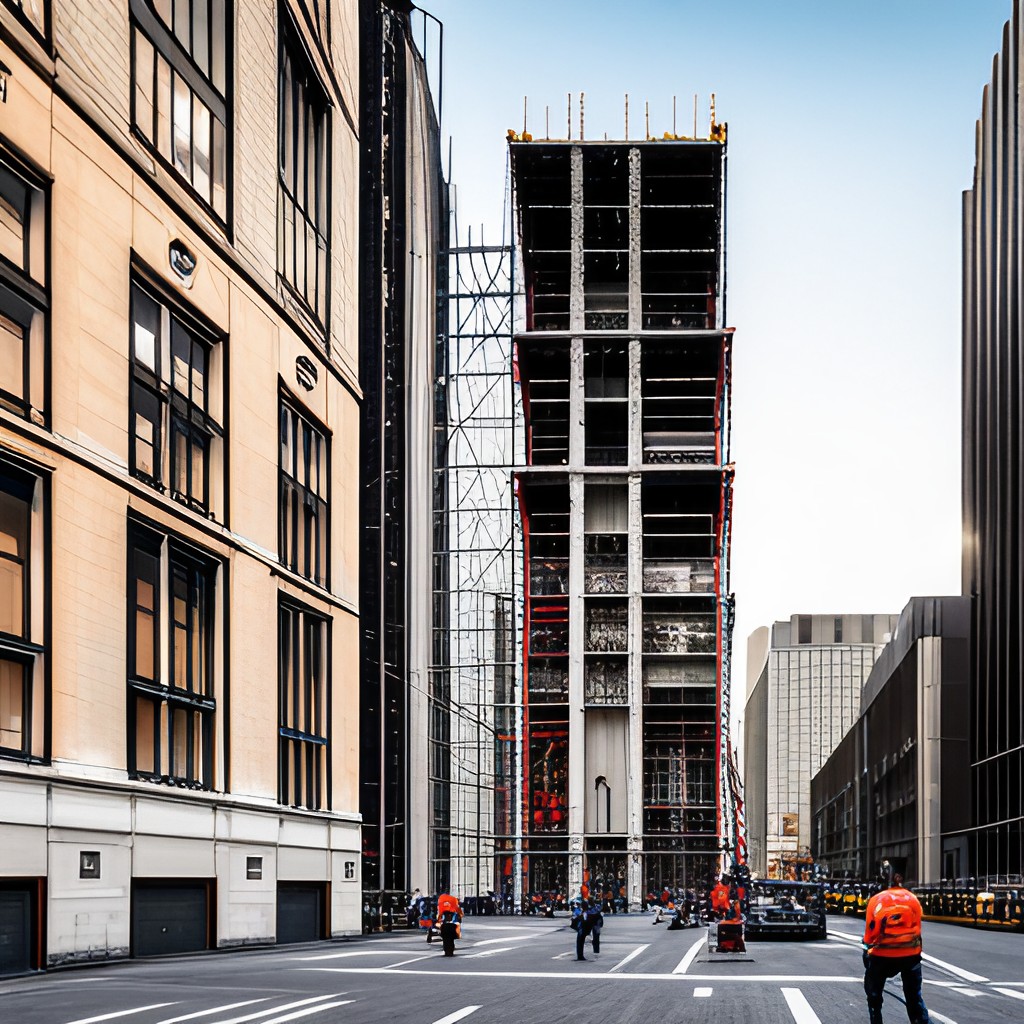Construction sites in New York face unique challenges and regulations, one of the most complex being the Scaffold Law 240/241. This law imposes strict liability on contractors for injuries suffered by workers in falls from heights, creating significant insurance and liability challenges. Understanding the provisions of this law can help contractors navigate its impact and mitigate risks.
Understanding New York Scaffold Law 240/241
The Scaffold Law, also known as Labor Law 240/241, was passed in 1885 to provide injured workers with a remedy against the owners and contractors of job sites where they were injured. The law requires contractors to provide workers with safe and appropriate scaffolding, hoists, ladders, and other equipment to work at elevated levels. The law also imposes strict liability against contractors and owners for injuries suffered by workers in falls from heights, making it challenging for contractors to obtain insurance and manage risks.
History and Purpose of the Scaffold Law
The Scaffold Law was enacted to protect workers from the dangers of working at elevated heights. At that time, no regulations were in place to protect workers from the hazards of working at heights.
Workers were often required to work on scaffolds or ladders that were unstable or not adequately secured, resulting in numerous injuries and fatalities. The law was designed to provide financial and legal protection to workers who suffered injuries in exchange for their agreement not to sue their employers under common law. The Scaffold Law remains one of the country’s most stringent worker protection laws.
Over the years, the Scaffold Law has been amended several times to strengthen its provisions and increase worker protections. In 2010, the law was amended to include additional safety requirements, such as using personal fall protection systems and increased worker training. These changes were made in response to a growing number of fatalities and injuries on construction sites in New York.
Key Provisions of the Law
The Scaffold Law imposes absolute liability on contractors and owners for injuries sustained by workers in falls from elevated heights. The law applies to more than just scaffolding, extending to ladders, hoists, slings, and any other device used to raise or lower goods and people. Unlike in most personal injury cases, the law does not require workers to prove that the owner or contractor was at fault.
Under the Scaffold Law, contractors and owners must provide workers with proper safety equipment, such as harnesses, lanyards, and lifelines, when working at elevated heights. The law also requires contractors to train workers on using the equipment and working safely at heights. Failure to comply with these requirements can result in fines and legal action.
How it Differs from Other State’s Regulations
The Scaffold Law in New York is unique in its imposition of absolute liability against contractors and owners. Most other states impose comparative negligence, meaning the worker and employer may be held accountable for an injury resulting from a fall. The Scaffold Law effectively places the burden of preventing falls solely on contractors and owners.
Opponents of the Scaffold Law argue that it burdens contractors and owners, making it difficult for them to obtain insurance and manage risks. They argue that the law increases the cost of construction projects in New York and makes it less competitive with other states. However, supporters of the law argue that it is necessary to protect workers and ensure they are not harmed while on the job.
In conclusion, the Scaffold Law in New York is designed to protect workers from the hazards of working at elevated heights. The law imposes strict liability on contractors and owners, making it essential for them to provide workers with safe and appropriate equipment and training. While the law has its critics, it remains one of the country’s most stringent worker protection laws and has undoubtedly saved countless lives.

Liability and Insurance Implications for Contractors
Contractors’ exposure to liability under the Scaffold Law creates significant insurance challenges, making it difficult to obtain coverage at reasonable rates. Insurance premiums for contractors in New York are among the highest in the country due to the Scaffold Law’s absolute liability requirements. Contractors must ensure that they have adequate insurance coverage to protect against potential claims of injuries resulting from falls at their job sites.
Construction sites are inherently dangerous, and accidents can happen even when all safety protocols are followed. The Scaffold Law was enacted to protect workers from injuries resulting from falls at construction sites. However, the absolute liability imposed on contractors under the law has made operating a profitable business in New York challenging.
Strict Liability under Scaffold Law
One of the most significant challenges for contractors is the absolute liability imposed under the Scaffold Law. Even in cases where a worker may have been entirely at fault for an injury resulting from a fall, the contractor is still liable. This burden of absolute liability can lead to costly legal fees, settlements, and judgments, making operating a profitable construction business in New York difficult.
For example, if workers fall from a scaffold because they are not following safety protocols, the contractor is still liable for their injuries. This absolute liability can make it challenging for contractors to defend themselves against negligence claims, even when they are not at fault.
Insurance Requirements and Challenges
Contractors must ensure adequate insurance coverage to protect themselves from liability claims stemming from the Scaffold Law. Insurance carriers may require contractors to implement strict safety protocols and procedures, such as regular training for workers and regular inspections of scaffolding equipment. The high cost of insurance premiums for contractor liability can significantly affect a company’s profitability.
Contractors must also ensure their insurance policies cover all potential liabilities, including property damage and bodily injury claims. Failure to obtain adequate insurance coverage can result in significant financial losses for contractors if they are found liable for injuries resulting from falls at their job sites.
Potential Legal Defenses for Contractors
Despite the absolute liability imposed under the Scaffold Law, contractors may still have legal defenses available in certain situations. For example, they may argue that the worker was solely responsible for causing their injuries or was adequately trained and instructed on safety procedures. Contractors must work with experienced attorneys who understand the nuances and complexities of the Scaffold Law when defending against liability claims.
Legal defenses can be costly, and contractors must weigh the potential costs of defending against liability claims versus settling the claims out of court. Working with experienced attorneys can help contractors make informed decisions about proceeding with liability claims and potentially minimize their financial losses.
In conclusion, the Scaffold Law creates significant challenges for contractors in New York, including high insurance premiums and the burden of absolute liability. By proactively protecting themselves, contractors can operate profitable construction businesses while prioritizing their workers’ safety.

Ensuring Proper Training and Safety Measures
Training workers to adequately use and maintain scaffolding equipment, ladders, and other tools is essential to risk management. Workers must be instructed on safety procedures, such as adequately using harnesses and fall protection devices. Regular inspections of scaffolding equipment can also help identify potential safety hazards before an accident occurs.
Providing workers with comprehensive training on safely using scaffolding equipment is essential. This includes instruction on how to correctly erect scaffolds, how to climb and descend scaffolds safely, and how to use fall protection devices. Workers should also be trained on properly using and caring for ladders, commonly used with scaffolding. By providing workers with thorough training, contractors can help ensure they have the knowledge and skills to work safely on scaffolds.
These safety plans may also help contractors with their worker’s compensation insurance premiums. You can read the article that we created on that here.
Regular Inspection and Maintenance of Scaffolding
Regularly inspecting scaffolding equipment and its components can help identify potential safety hazards before an accident occurs. This includes ensuring that scaffolds are adequately erected, stable, and able to support the weight of workers and equipment. Contractors should also ensure scaffolds are regularly checked for damage or wear and tear that could affect their structural integrity.
In addition to regular inspections, contractors should also implement a maintenance program for their scaffolding equipment. This program should include regular cleaning and lubrication of equipment, as well as the replacement of worn or damaged parts. By correctly maintaining their scaffolding equipment, contractors can help ensure that it remains in good working condition and is less likely to fail.
Documentation and Record-Keeping
Recording and maintaining detailed records of all safety procedures, training, inspections, and maintenance can help contractors demonstrate compliance with the Scaffold Law’s requirements. In the event of a liability claim, records can be used as evidence to support the contractor’s defense.
Contractors should keep detailed records of all training provided to workers, including the training date, the topics covered, and the names of the workers who attended. They should also keep records of all inspections and maintenance performed on their scaffolding equipment, including the date of the inspection or maintenance, the results of the inspection or maintenance, and any repairs or replacements made.
Recent Developments and Proposed Reforms
The Scaffold Law has been the subject of significant controversy and advocacy efforts for reform in recent years. Critics argue that the law imposes undue burdens and costs on contractors, making operating a profitable business in New York difficult. Advocates for reform argue that the law is necessary to protect workers from the dangers of working at elevated heights.
Several industry groups and organizations have advocated for reform of the Scaffold Law in recent years, arguing that it is overly burdensome and leads to inflated insurance premiums. These groups have proposed an overhaul of the law’s strict liability provisions, offering alternatives such as comparative negligence or a focus on encouraging safe working practices rather than punitive measures.
Potential Future Changes to the Law
The future of the Scaffold Law and its impact on contractors in New York remains uncertain. Reform proposals have been met with resistance from worker advocacy groups and union organizations, who argue that any changes to the law would weaken worker protections. Whether any significant changes to the Scaffold Law are implemented in the future remains to be seen.
Conclusion
The Scaffold Law imposes significant challenges and risks for contractors in New York, requiring careful attention to compliance and risk management practices. Understanding the law’s provisions and potential defenses can help contractors navigate liability claims and ensure adequate insurance coverage.
As a business owner, you understand the importance of protecting your investments. Our agency specializes in business insurance and offers a variety of policies to fit your unique needs. From liability to workers’ compensation, we’ve got you covered.
Don’t let unexpected events put your business at risk. Contact us today to schedule a consultation and learn more about our comprehensive coverage options.
For more information, contact Sound Harbor Insurance today at 631-517-9211.
